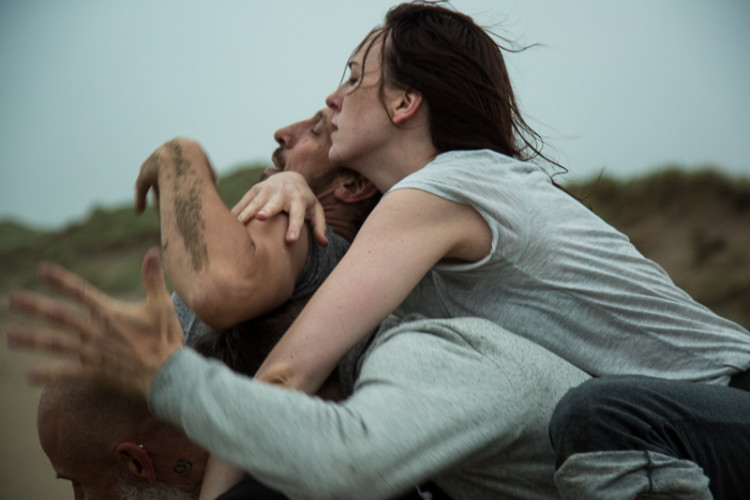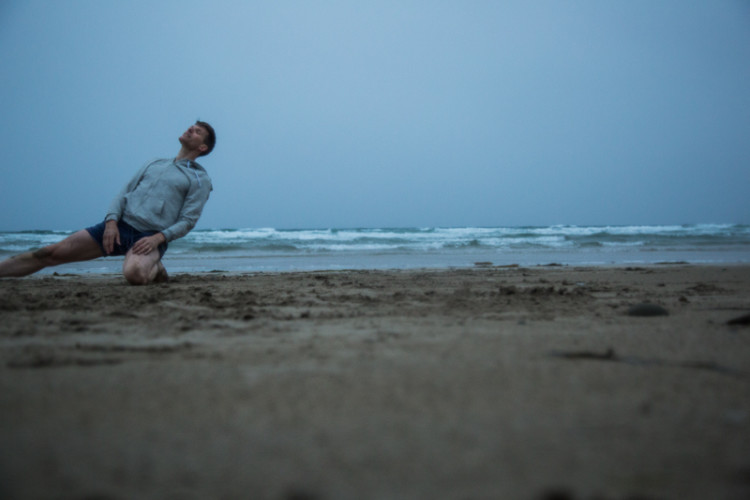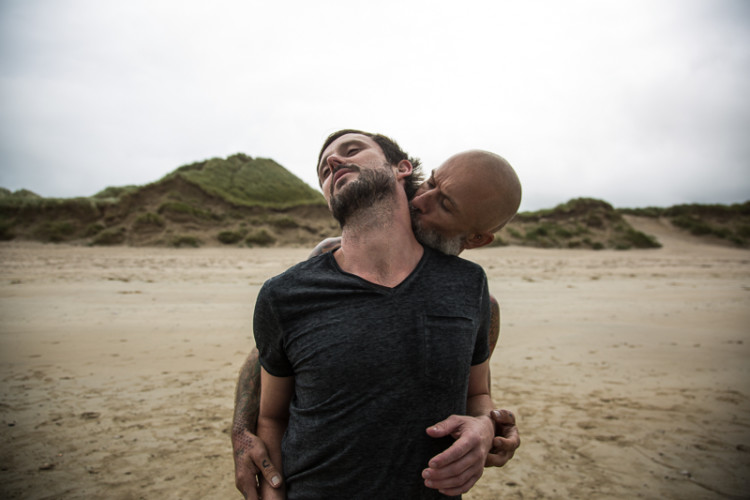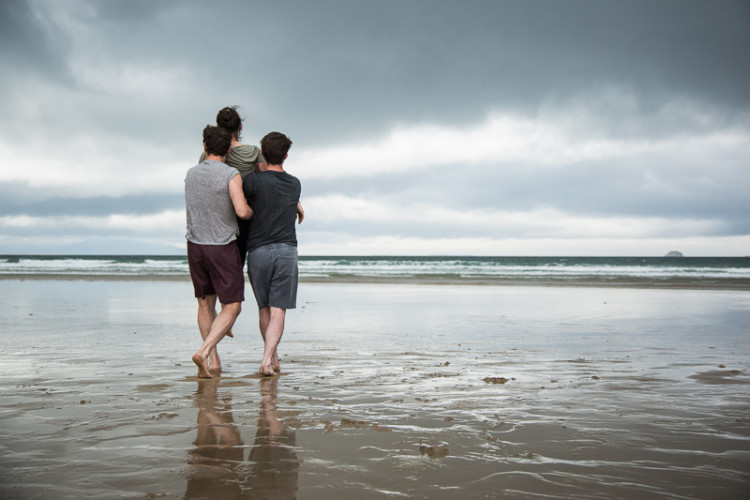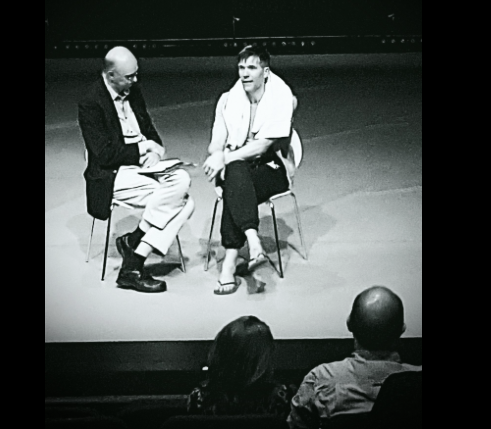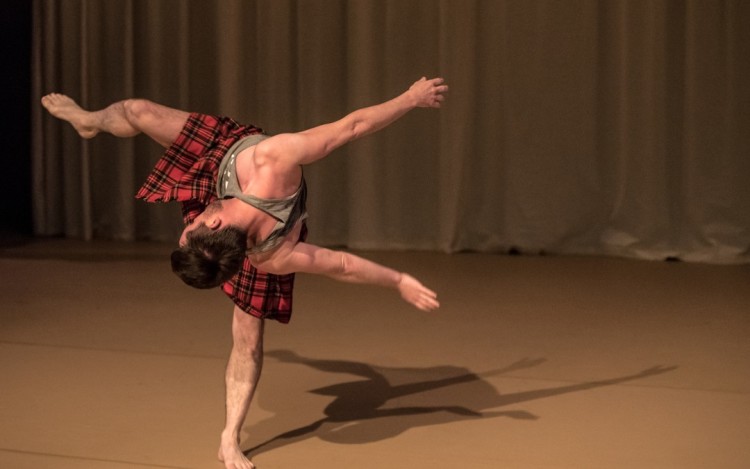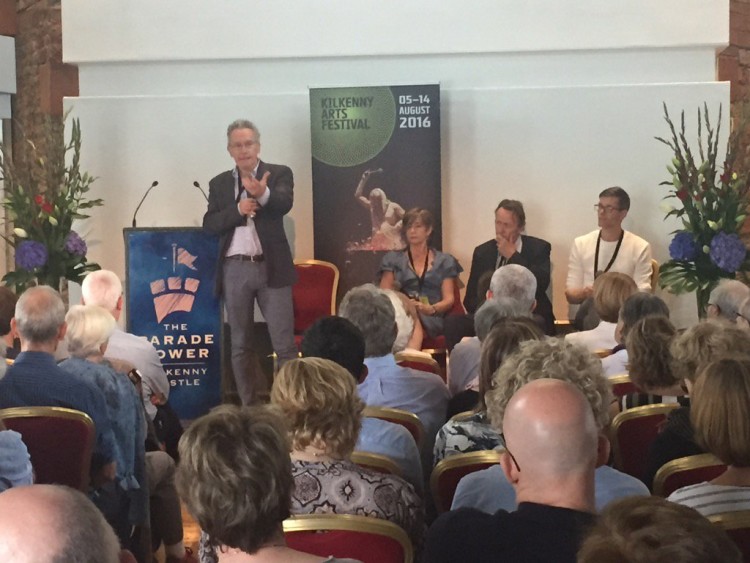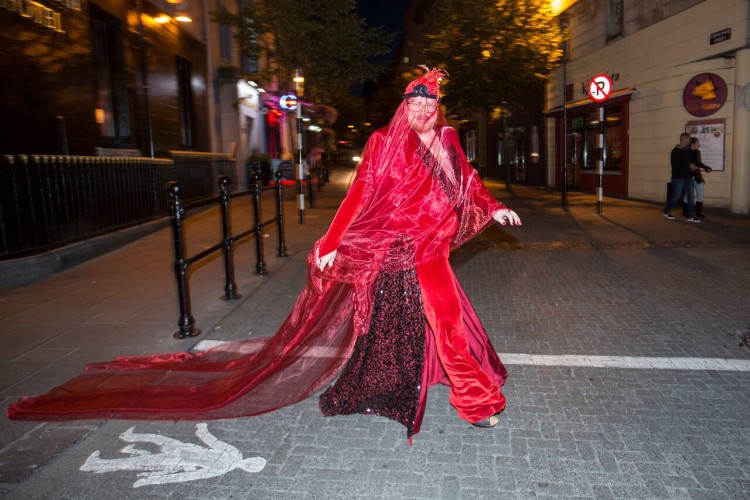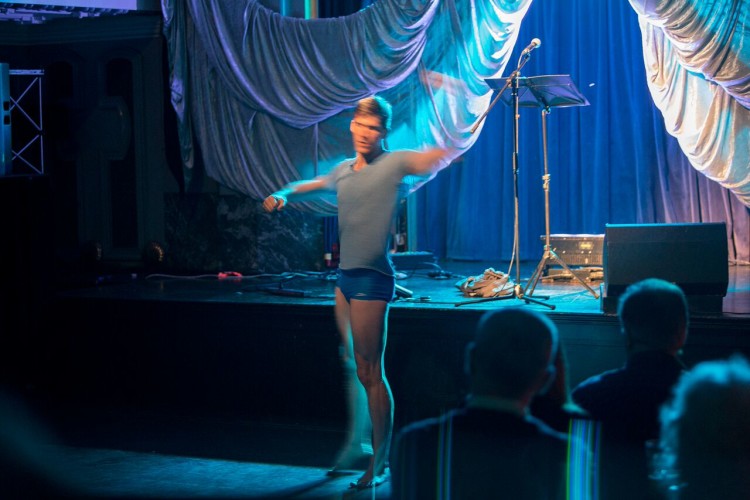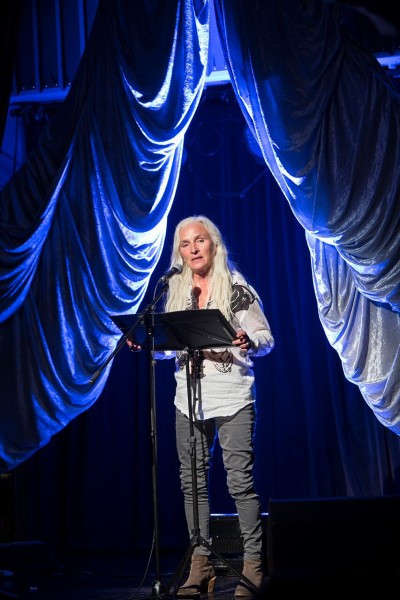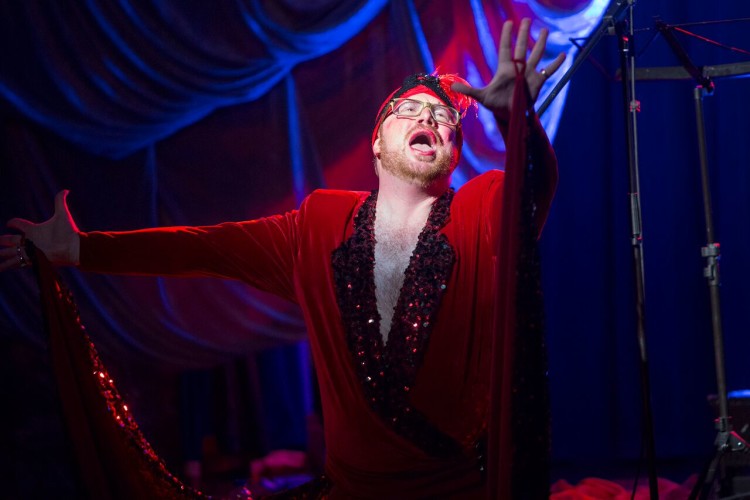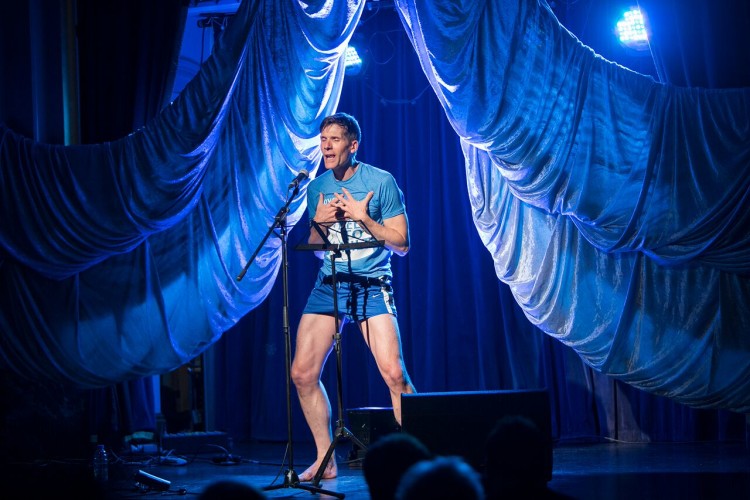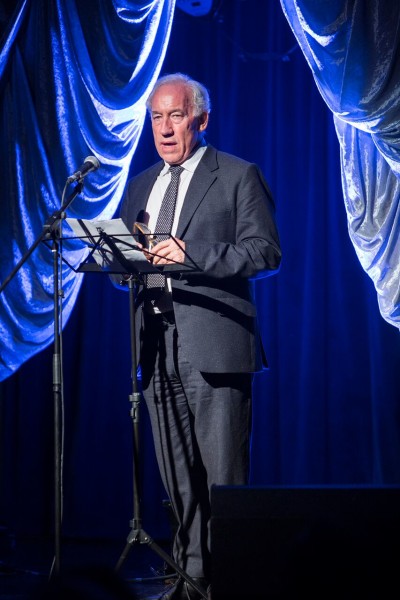The Casement Project pays close attention to the historical legacy of Casement’s life and afterlife. But that attention is in the service of figuring out what we need to be doing now: how we come together, live together, create the conditions where all kinds of people can flourish together. Una’s powerful eulogy, delivered at A Wake for Roger Casement at Kilkenny Arts Festival, reminds us what Casement’s legacy might mean now.
She started with the Jay Z/Kanye West track, ‘No Church in the Wild’
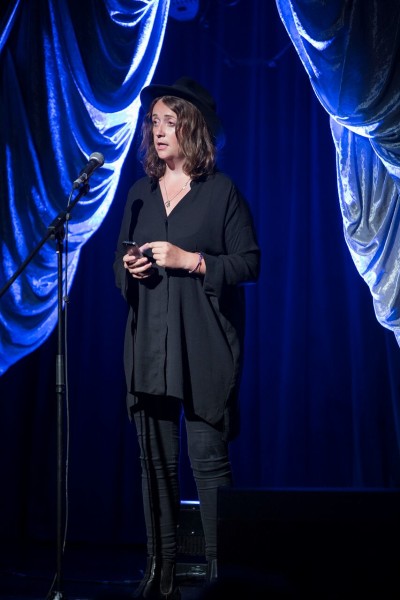
Una Mullally – Photo John D Kelly
Watch The Throne
Human beings in a mob
Sanctioned by a king
With a lineage to God
What’s a God to a non-believer?
They won’t believe him, say anything
Don’t make it out alive
Alight alright, case closed in the wild
Tears on the post office floor
Blood stains the GPO door
Malaria sweat makes a pallor sweet
The white knuckle colour when cuffed by police
Homosexual chic
Forgeries make truth capeesh
The black books make white sheesh
Hanged on a comma, Abu Gharib on a leash
Beating on the door, a ghost with no apologies
All for Yeats’ screech
Out there scrawling, sucked such milk as he
Conrad was a writer, Cyclops winks one-liners
Overflow like guns to Howth, get the hell up out your seats
Connollies
_____________
And now a spoken word piece
Peace
Make it to Peru
Now what the hell you gonna do
Whips on black skin make it stripe like a zebra
As Yeezy would pronounce it
So go Kanye West young man
And report on a slaughter
Them boys cutting rubber trees
When all yer kin wanted was the rubber
Duck
Because they made the Sir silent
Stripped knighthoods like trees
The coconut shells gathering that rubber nectar
When nationalities were punchlines
Cartoons punched in magazines
And somehow someone gave enough of a fuck
To dissect the heart of darkness
And realised it beat you
But empires strike back
And you will now fall to treason
A waterboarded curtsey
Hold your knees up
You don’t get to control the reason
Or the threesome
Of patriot and prisoner and maybe Domhnall Gleeson
Would make a good fit for a biopic
England’s in difficulty
Ireland’s opportune
It sounds so weird now that we have to pretend everything between us is cool
Cyclops, “He’s an Irishman”
Kicking ball in a park in Belfast
With your name on it
Not that they’re a bit into names in the North
Mind you down South they changed it to Casement’s Fort
Maybe the ball kick is a Garryowen
That’s a dog
Tied up outside Barney Kiernan’s
And talk of Paddy Dignam
“I’m going to the Pisser, Burke”
And there I’ll read the paper
Of a martyr hanged, when the Sir is now silent
Stripped of a knighthood
Because the Dark one rises
Why do all our heroes end with a slab in Glasnevin
Musings over a pint in the Gravediggers
Pretending to remember them
Vowing to write more to our family
Our sisters, our Ninas
The nee-naw nee-naw
Of cops chasing down dealers
The slops make us slobs
And the talk turns to songs
Of thinking “Ho ro the rattlin’ bog”
Is about Ratlin Island
My vodka and lime
But you in the quick of it
The white knuckle powder
That makes dust of the bones in it
The white knuckle powder on the cistern of porcelain
It’s pretty fucking hard to be a pacifist on a German boat
But you though
All Malerone fever
And Pentonville reasoning
Couldn’t get the boat to vote
and what now
Would they follow you now Roger?
Would they follow you with drones
All the way to Monaghan
For the attack of the clones
Some capture moments
Others make legacies
That sounds like an Instagram hashtag
Of quotes over sunset allegories
An orphan at 13
Washed ashore on Good Friday
King Leopold the Second
Snorkelling out there
On a sand bank plucking starfish
An ear to a conch to hear stories of quares
Watch The Throne
Then watch the judge
Slide his glasses down his nose in court
What did you pick up in the ferry port
A secret, a passport stamp
Did they have Duty Free back then or were you on your Toblerone
But back to now
Back to the drones
Back to the incessant moaning of us tapping on phones
CAN YOU HEAR US
ARE YOU THERE
Can our echoes reach out
To your fizzing bones in a pit dug by louts?
Or do we hide you
Can we abide you
Can we pull you to now
Can we imagine a present where you could exist unbowed
Would we project on the Project
A mural of yours
Would you need planning or banning
Or petitions or Ts
Crossed and “i’s” dotted
And freeze framed in online identities
Giving speeches on corners instead of status updates
With billion dollar companies hosting all our opinions so great
Would you soapbox or succumb to the hysteria loop
The feedback of micro-controversies spat out each day anew
Put a halt to those sites
Brings tribeswomen fresh water
Well, well, well, there’s still reports to be written on slaughter
Which patriots do we choose to walk in the steps of
Roger that
And I pull from the past a nation on its knees
That no one can stop the march of
And no empire can appease
To you at your desk in 2016
Writing blog posts about Direct Provision
And Snapchatting the trip to Calais
There you are again
In the Observer on Sunday
Writing about Yazidis and British girls FGMd on their school holidays
If the papers could pay for you to go abroad
You’d come back with an eyepatch all Colvin and Fisk
Talking of risk and humanity and refugees in rubber ships
Pulled to shores and arrested, fainting and sick
Was that your boat or u boat with the fake life jackets?
The toddlers in the surf and the dirty right wing racket
Then one day a run to Leinster House
A brilliant riot
Us standing there shouting angry and violent…
What’s up what’s up motherfuckers where my rights at
You gone make me come down to Kildare Street with a begging cap
Mummy wrap your mouths unless your talk is going to speak the facts
Ask them where your daddy is tell them I just want my rights
The crowd moves forward and number EIGHT looms large
The zero tells the eight nice belt and we all feel in charge
At least for that moment when we thought we could change
With you at the forefront mentally switching lanes
Endlessly remaining not Brexit not lame
Not fascist not racist not hating not tame
But wild and ferocious because that’s what’s required
When politeness is a noose we have to wear like a bow tie
And I’M SO HIGH you’d say
In the smoking section of Mother
The night we won everything when gay men were equal but not their mothers
Or their lesbian sisters who were still women too
But you’d be there, Roger, giving us a clue
Colonel Mustard in the Dining Room with the candle stick too
Telling us to focus that victories must be multiple
They equality does not exist if one of us is unequal.
Joe Caslin would draw you on a George’s Street gable wall
All gorgeous and gay and dapper and tall
And the flat whites and dry shites
Of the dirty old town
Would find a way to embrace you, single now, Claddagh ring upside down
Could we approach you, in the corner of a cookie cutter cafe
Could we broach you like Tara on a tweed cape and just say
Roger, I see you. Roger, I know. Roger, we love you.
Roger, do you want dessert? Today it’s afagato.
But meanwhile we imagine
So few of us just do
We want the comfort and warmth, and the hum of a stew
We want your legacy back.
Watch the Throne.
We want you.
